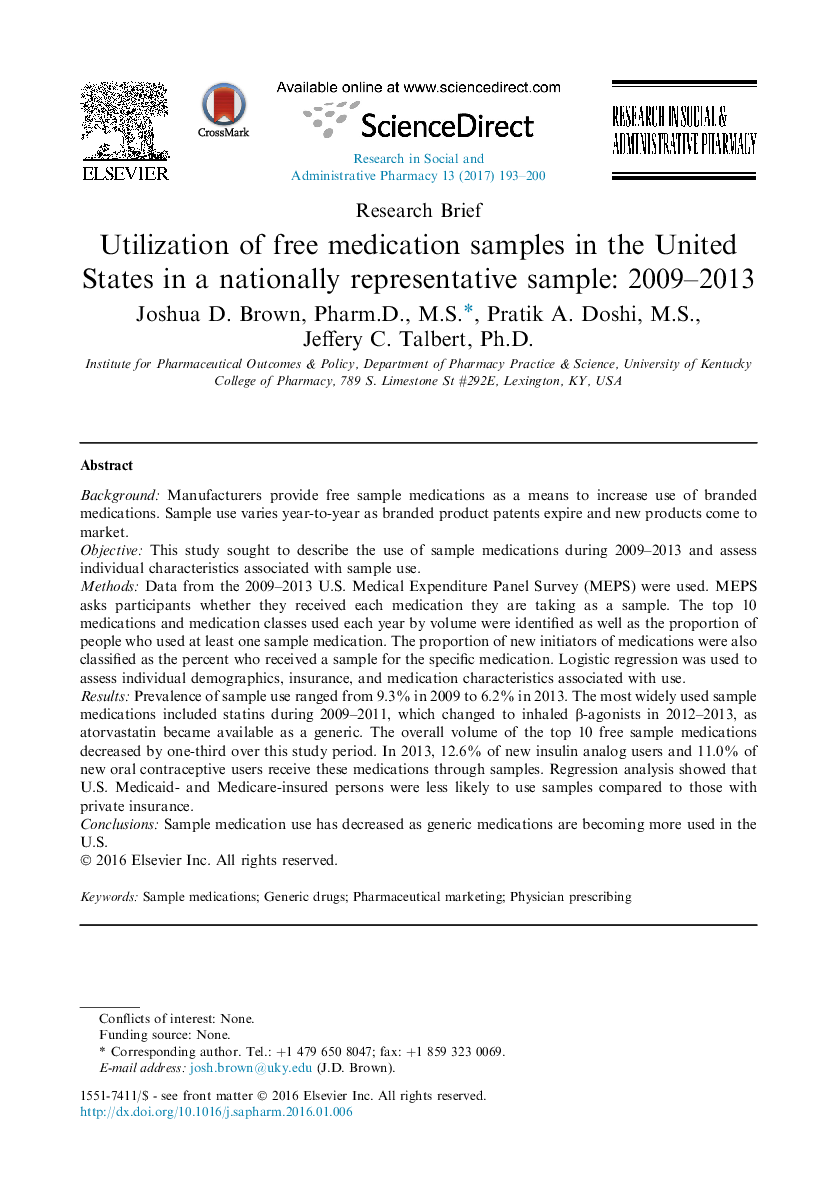| Article ID | Journal | Published Year | Pages | File Type |
|---|---|---|---|---|
| 5551388 | Research in Social and Administrative Pharmacy | 2017 | 8 Pages |
BackgroundManufacturers provide free sample medications as a means to increase use of branded medications. Sample use varies year-to-year as branded product patents expire and new products come to market.ObjectiveThis study sought to describe the use of sample medications during 2009-2013 and assess individual characteristics associated with sample use.MethodsData from the 2009-2013 U.S. Medical Expenditure Panel Survey (MEPS) were used. MEPS asks participants whether they received each medication they are taking as a sample. The top 10 medications and medication classes used each year by volume were identified as well as the proportion of people who used at least one sample medication. The proportion of new initiators of medications were also classified as the percent who received a sample for the specific medication. Logistic regression was used to assess individual demographics, insurance, and medication characteristics associated with use.ResultsPrevalence of sample use ranged from 9.3% in 2009 to 6.2% in 2013. The most widely used sample medications included statins during 2009-2011, which changed to inhaled β-agonists in 2012-2013, as atorvastatin became available as a generic. The overall volume of the top 10 free sample medications decreased by one-third over this study period. In 2013, 12.6% of new insulin analog users and 11.0% of new oral contraceptive users receive these medications through samples. Regression analysis showed that U.S. Medicaid- and Medicare-insured persons were less likely to use samples compared to those with private insurance.ConclusionsSample medication use has decreased as generic medications are becoming more used in the U.S.
